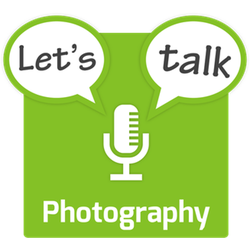Panel
- Bart Busschots (host) – @bbusschots – Flickr
In this solo show, and very much inspired by last month’s chat with Antonio Rosario about the railway photographer O. Winston Link, Bart digs a little deeper into the whys and the hows of railway photography. The first part of the show explores the differences between thinking about shooting railways as opposed to trains, with the hope of inspiring you to have a go. Following on from that, the second part gives some practical tips that might help you convert your inspiration into great images.
While this podcast is free for you to enjoy, it’s not free for Bart to create. Please consider supporting the show by becoming a patron on Patreon.
Reminder – you can submit questions for future Q & A shows at http://lets-talk.ie/photoq
Show Notes
It was great getting to talk with Antonio about the great railway photographer O. Winston Link on the previous show. In that show we touched on the difference between photographing trains and photographing railways, but in the weeks since I felt I had more to say on the topic, so here we go 🙂
Part 1 — Railways -v- Trains
- Railways are huge pieces of human and physical infrastructure.
- Railways are deeply imbedded in their places.
- Trains can’t handle steep grades or sharp turns, so the landscape has to be adapted to them!
- Even railways that have been shut down for decades still leave their mark on the landscape.
- The trains on a railway are heavily influenced by the railway’s place, and local needs. Passengers? Freight? Both? Fast? Slow? Long? Short? Diesel? Electric? Both? Short journeys? Long journeys?
- Railways are deeply imbedded in people’s lives.
- Even today it takes quite a few humans to make a railway go!
- People’s lives are regulated by railway timetables.
- I am interested in trains, but in the same way a car nut is interested in engines — they’re an important component, but they’re just one piece of a much bigger jigsaw!
- I really like capturing the physical aspect of how railways interact with landscapes — trains in their places.
- I also really like capturing a railways’s yearly cycles as the seasons come, go, and come again.
- Some bigger railway components to think about capturing:
- stations
- signals and signal boxes
- crossings
- the tracks themselves
- bridges & tunnels
Part 2 — Tips for Capturing Railway Shots with Trains
- DON’T TRESPASS ON THE LINE — no composition is worth your life!
- Also, every train photographer who acts the goat puts more pressure on railway companies to put up ever uglier walls and fences, blocking off ever more possible views and compositions.
- Depending on where you live, and how twitchy the railways company is, you might find yourself encountering law enforcement too. If you’re the wrong race in the wrong place with the wrong police force that could be just as fatal as getting hit by a train!
- RESPECT PROPERTY, CROPS, LIVESTOCK, AND NATURE ALONG THE LINE SIDE
- Don’t rely on luck — take the time to really get to know a railway.
- How closely do they run to time?
- Timetables are per station, good shots are usually between stations, so you need to know how far your locations are from the stations either side
- Do they have a real-time app?
- Do they run different rolling stock at different times of the day or week?
- How well can you hear trains coming at your locations?
- Are there whistle boards nearby, and if so, how long will it be between hearing the horn and the train arriving?
- Is there a level crossing nearby who’s bells/sirens you can hear? If so, how much warning does that give you?
- Plan, plan, and plan some more! Trains literally run to a timetable — you have to be ready when they make their appearance, because you have zero control!
- Take note of how the direction of light changes throughout the day, and as the seasons change – the railway doesn’t move, but the sun does, so different shots become possible at different times!
- Bear in mind that cloudy days open up angles and compositions that would normally be against the sun
- It’s all about finding good foregrounds, backgrounds, and framing features — a railway shot with a train is about showing the train in a place, so the stuff around the train is at least as important as the train itself, if not more!
- Take test shots while you wait for the train
- If conditions and gear allow, use manual exposure control
- Train headlights can really bias light meters, leading to underexposed shots
- Not possible in variable cloud where the sun could come and go any instant!
- If conditions and gear allow, use manual exposure control
- Be careful not to let your exposure times drop — trains move, unless you want them blurred, you need to have short exposures!

